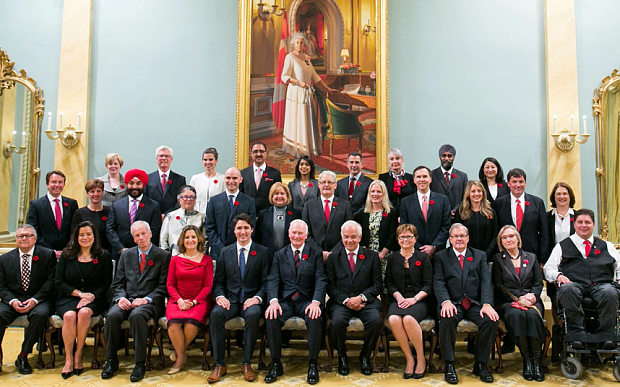Avoiding the merit trap by understanding the impact of unconscious bias and increasing inclusion
Liberal women wore red this week as a show of solidarity to focus attention on the cost to Australia of losing high performing female talent from the Liberal Party due to a toxic workplace culture.
One of the things that I love doing these days is facilitating Diversity, Inclusion and Unconscious Bias workshops with leaders and employees, and seeing the positive impact this interactive training can have. To work it needs to be evidence based, allowing the creation of a safe space to have real conversations about what everyone can do to eliminate unconscious bias in the work environment. This ensures merit and good decision making are not undermined.
5 things that I observe when facilitating these workshops is that generally:
· People are well intentioned but don’t know what they don’t know
· All Australians want to work in a fair workplace
· People respond to the scientific evidence of how unconscious bias impacts the recognition of diverse talent and reduces effective decision making
· People also respond to the robust business capability research that organisations with more diverse leadership teams deliver better performance
· Good people are willing to step in and take bystander action to challenge bias if the workplace culture feels safe for them to do so.
Despite these mainly positive take-aways, too often leaders are fearful of intervening in the D & I space due to fear of backlash and/or being accused of political correctness. However, if leaders don’t intervene to ensure a fair selection process and an inclusive workplace, the unconscious bias research shows that we will continue to unconsciously exclude and not set up our people or our organisations for 21st century success in our VUCA (volatile, uncertain, complex and ambiguous) world.
Watching last week’s Wentworth by-election Liberal Party pre-selection process play out, and also listening to experiences being described by elected Liberal Party women speaking out alleging a bullying culture in the liberal party, I was reminded of two things:
· My experience during my banking career, when one of our most senior female executives produced out of frustration a very insightful and funny educative video showing a female in a smart corporate suit riding a toddler push bike around a racing track on her floor. Her frustration developed as each time she passed the lift she put her name forward for a highly sought-after leadership role. Each time, she was told “no you’re not quite ready yet – go around one more time.” In contrast, there was always a well qualified male candidate ready for the role who leaders described as the best person for the job – who was typically a ‘mini me’ of the leader who was making the promotion decision.
· Research from the STEM space that found both male and female PhD students experienced the same toxic work culture differently - with women being unwilling to put up with the masculine blokey culture and voting with their feet, choosing to leave and take their valuable skills to other organisations. In contrast, men saw that riding out with the culture was just part of the game and accepted it.
Reflecting on our current Australian leadership challenges in representing diversity, I think it’s instructional to look to Canada’s approach to leadership diversity; as both Australia and Canada have similar population demographics - being amongst the most diverse countries in the world.
Justin Trudeau has demonstrated what is possible when a leader decides to strategically intervene with bold diversity leadership. He ensured the leadership team actually reflected the diversity mix of the population it served, to improve the quality of decision making.
In 2015, Canada’s then new and second youngest ever Prime minister Justin Trudeau named a young and ethnically diverse cabinet, with a ministerial team that for the first time in the country’s history was equally balanced between men and women. The ministers – 15 women and 15 men – were mostly aged under 50, in a team marking both a generational change and a commitment to reflecting Canada’s diversity.
Image via The Telegraph
“It’s important to be here before you today to present to Canada a cabinet that looks like Canada,” Trudeau told reporters soon after he was officially sworn-in as the country’s 23rd Prime Minister. Asked to explain his gender parity promise, he answered: “Because it’s 2015.”
So, what can we do to address the merit trap to increase fairness?
When we see an outcome like we have over the past week in politics that highlights a leaky talent pipeline for female talent, and we hear highly capable women being told by their peers and colleagues that they just need to toughen up to succeed, we have a choice to make. We can continue to ‘play around the edges’ with what I guarantee will be minimal sustainable impact and will perpetuate the current culture where diversity is tolerated, but not valued, embraced or leveraged to increase organisation capability. Or, we can call out bias when it happens and undertake bold diversity leadership to ensure a fair go for all Australians.
The following 3 questions may be useful to ask in these situations:
· What are the inherent requirements of the job and the critical selection criteria the best person for the job must meet?
· Are these criteria open and transparent for everyone to see, or do the goal posts shift from applicant to applicant based on their in-group or out-group membership?
· If there are no meritorious women on the short list, stop and reflect and have another look, and check for yours and others biases and assumptions.
If you would like more information to help you educate your leaders, employees or volunteers to step in and call unconscious bias to help eliminate it in your workplace, please contact me.
Lead image via @ellinghausen


